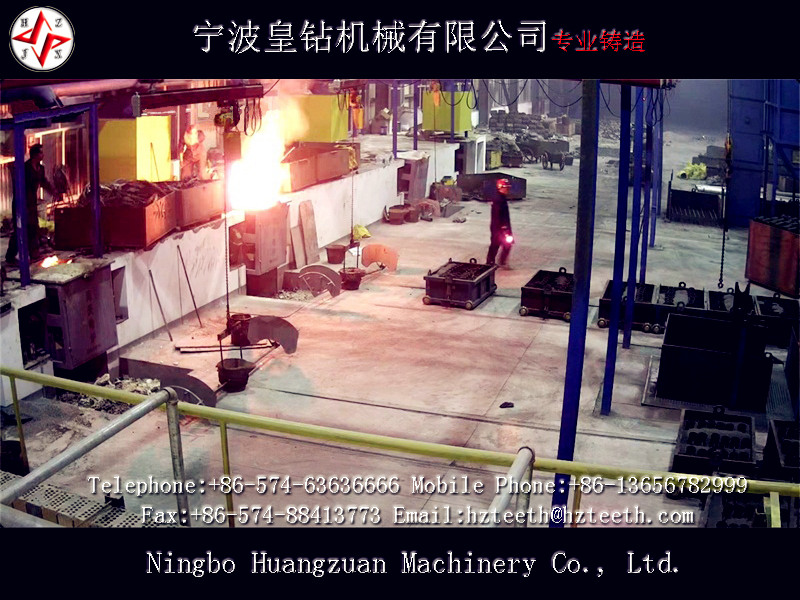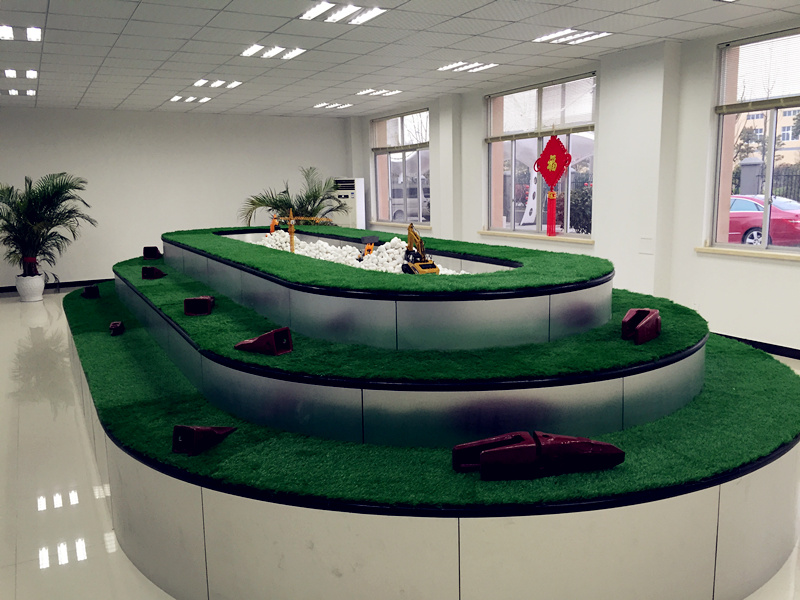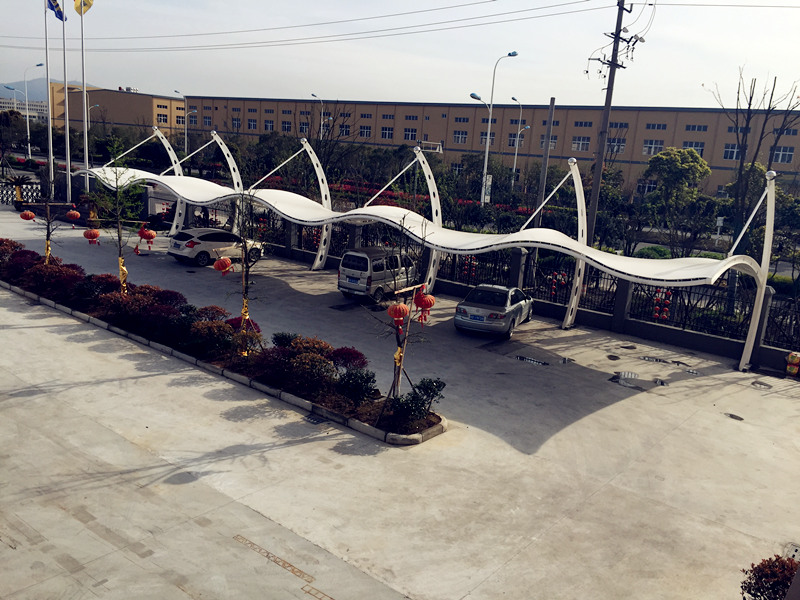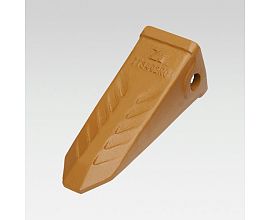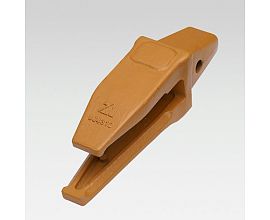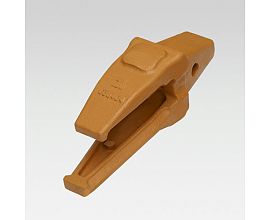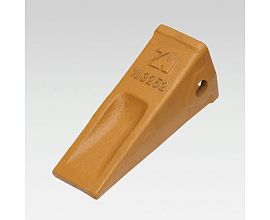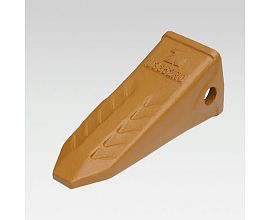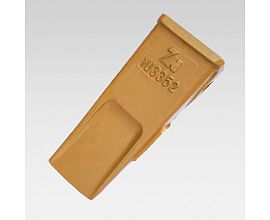Bucket teeth of excavators are important parts of excavators which are in direct contact with excavating media. There are two common structures of bucket teeth of excavators: direct and horizontal. Direct mounting refers to the vertical installation of pin shaft and bucket teeth; horizontal mounting refers to the parallel installation of pin shaft and bucket teeth.
1. Direct-mounted structure, which is more convenient to disassemble, is suitable for the situation of short bucket teeth spacing and relatively long pins. Because if transversely mounted, when disassembling a single bucket teeth, the pin will interfere with the adjacent bucket teeth. When excavating, the straight-loaded pin will be squeezed by excavating materials. If the excavating force is large, the straight-loaded bucket tooth structure can not meet the requirements and easily lead to the pin falling off. Therefore, although this structure is easy to disassemble, it can not be used in excavators with large excavating force and high tonnage.
2. Cross-mounted structure, which is inconvenient for disassembly. Because the pin is relatively long, when disassembling single bucket teeth, special long rod tools should be used to disassemble and assemble in order to avoid interference between pin and bucket teeth. During excavation, the cross-mounted pin will not be squeezed by the excavating material and can bear a larger excavation force. However, when the clamp spring is subjected to reciprocating lateral force in the use process, it is easy to wear and fail, which leads to the pin falling off.
For the above two bucket teeth structure, wear and tear will occur in the use process. Only from the structural aspect of time-line discussion and analysis, we need to make the following improvements on bucket teeth structure.
1. Impact effect. In most cases, the pin connection between the tooth seat and the gear sleeve (i.e. between the teeth tips) spring is adopted. This connection requires a certain gap between the tooth seat and the gear sleeve to ensure that the matching holes have the margin of alignment. If there is no gap, assembly will be difficult, and processing and fabrication will reach a certain precision, which is not feasible. Under the action of impact force (the impact force is frequent when excavating hard materials), there is intense impact and friction between the teeth seat and the gear sleeve, resulting in a higher temperature, which reduces the hardness and impact toughness of the material, resulting in rapid wear of the teeth tip and impact fracture of the teeth seat. In addition, due to repeated impact, the pin and clip spring (clip spring deformation is very small, the impact deformation caused by large clearance is also easy to produce fatigue failure. At the same time, if the impact of cushioning impact cannot be reduced, the local pressure of hydraulic oil in the hydraulic system will be too high (which may lead to flutter), which will lead to the aging and failure of sensitive hydraulic and electrical components, and the direct and long-term impact may also lead to the breakage of arm and bucket rod. Moreover, the high frequency of impulse transmission, coupled with the sharp noise generated by the impulse, will make the operator feel uncomfortable.
2. The influence of excavation force and excavation speed. When the impact force is not affected, the high excavation force and speed will also cause the hard friction between the sleeve and the seat, which will lead to the local temperature rise. During excavation, due to poor working conditions, water and air are heated rapidly in the gap between the tooth seat and the gear sleeve, which will rust the part of the bucket teeth with low surface roughness and destroy the bucket by accelerating adhesion oxidation, hardening layer of the tooth surface and metallographic structure under the action of larger excavation force, so that the bucket teeth can not meet the requirements of use and reduce excavation efficiency.



